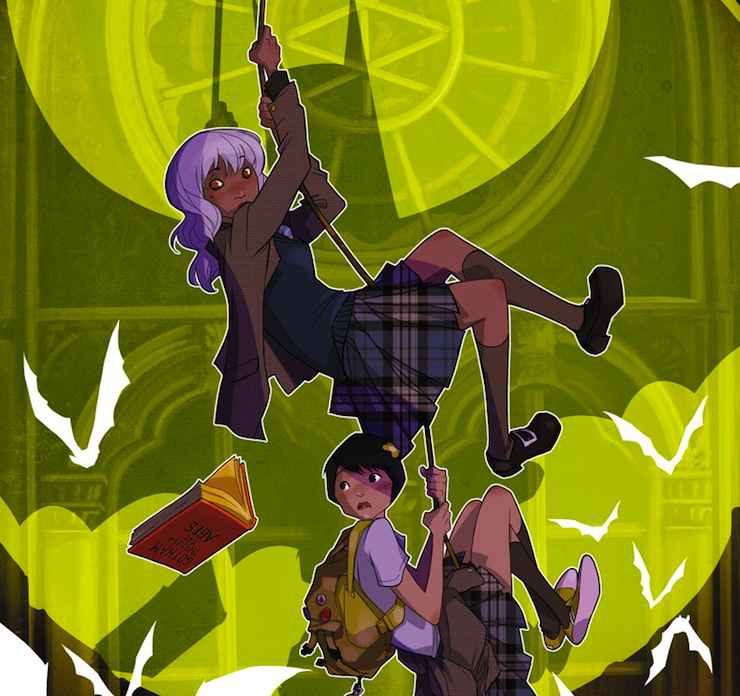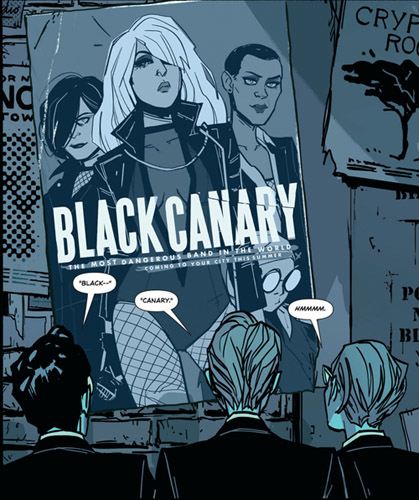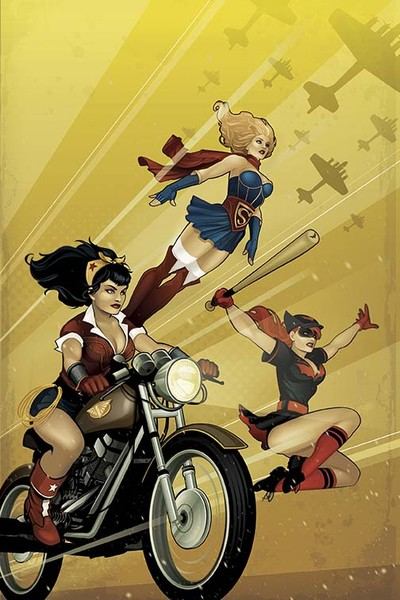On the heels of We Need Diverse Books’ Diversity in SFF panel at BookCon two weeks ago, the second annual Special Edition: NYC also took time to focus on diversity and how it impacts some of the most popular comic book series and graphic novels being published today. The convention did so through three panels: Representation Beyond Characters: How Diversity Bleeds Into Work, #BlackComicsMonth: Diversity in Comics, and Creating Comics: The Real Stories.
I was able to attend Representation Beyond Characters and Creating Comics. The former’s panelists were primarily people of color; the latter was all-female, including several women of color. Both talked about sneaking small but relatable details into worldbuilding, the difference between work-for-hire and creator-owned comics, and how publishers have responded to calls for greater diversity. Though the panels took place at different points during the con, they presented a refreshingly diverse lineup talking about real issues in modern storytelling.
Worldbuilding: Specific Trumps Generic
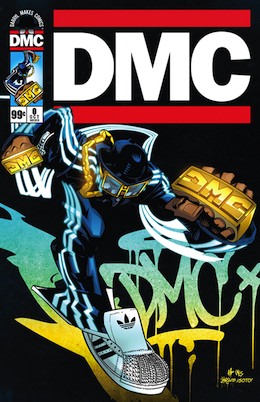 Representation Beyond Characters began small—that is, with tiny details spotted in the panels of comics like DMC. Moderator Daisy Rosario (producer for NPR’s Latino USA) pointed out the container of Café Bustelo sitting on the kitchen counter in one of Darryl “DMC” McDaniels’ comics. If you were Latino and grew up in NYC, she explained, you would have drunk that.
Representation Beyond Characters began small—that is, with tiny details spotted in the panels of comics like DMC. Moderator Daisy Rosario (producer for NPR’s Latino USA) pointed out the container of Café Bustelo sitting on the kitchen counter in one of Darryl “DMC” McDaniels’ comics. If you were Latino and grew up in NYC, she explained, you would have drunk that.
Similarly, Greg Pak (writer for DC Comics’ Batman/Superman and Action Comics) recalled reading about the hair-oiling scene in Spike Lee’s She’s Gotta Have It. Even audiences who did not grow up in the African-American community “understood it in context,” he said. “You understood the emotional intimacy between the characters. [It was a] moment that illuminates the characters, makes them real.”
It might seem counterintuitive to base worldbuilding on such minute moments, but it actually makes the stories more relatable. “If you make it more generic, no one cares as much,” Pak said. “The only ways characters live and breathe is if you give them as much as you can.” Similarly, Edgardo Miranda-Rodriguez, McDaniels’ collaborator on DMC, said that when readers told him, “I see myself in that book,” the character they were referring to was a young woman of color.
“I’m not coming from a place of fantasy,” he said about his process. “I’m coming from a place of reality.” Kim Gaines (Eventide) put it best: “I always try to make people before I make a race.”
Doing Your Research
But how do you do keep from tokenizing diverse characters? It’s a question that the WNDB SFF panel pondered, and Special Edition’s diversity panel had similarly solid advice.
“I think a lot of times writers draw reference from other writers’ works,” Miranda-Rodriguez said. “Other times they reference films.” Instead of looking at narratives, he suggested, look at documentaries. (Pak agreed, also suggesting reading memoirs.)
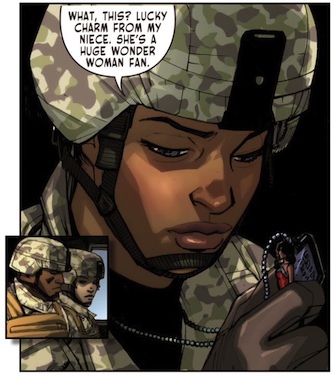
“You need to be super observant about stupid little things,” Amy Chu said, advising that writers watch strangers on the subway, among other things.
Chu discussed the genesis for “Rescue Angel,” her Sensation Comics Wonder Woman story set in Afghanistan: A classmate of hers, a black man, was a pilot in Afghanistan. From there, Chu (who had no background in the military) researched issues of ethnicity, gender, and dress for her protagonist, a Latina combat pilot.
“As a writer, we have the power to do that,” she said. “We don’t have to just go with cookie-cutter [ideas of] what we thought the military was like back then.”
Work-for-Hire vs. Creator-Owned Comics
Chu emphasized that she had the luxury of time in which to research her story. But that’s not often the case when writers and illustrators are work-for-hire, at the mercy of tight deadlines. Artist Alitha Martinez (Batgirl) said, “I find that if the writer didn’t put certain things in, I can’t add much more stuff.” Working under time constraints, artists will revert to certain body types they’ve already learned to draw quickly: “You try so hard to make it correct, you forget to make it diverse.” In her own work, however, “I can slow that process down. I can go back and add all the little touches.”
Martinez and Chu had the chance to work together on a Vertigo story, “So Blue,” set in near-future Detroit. Martinez said she was able to take greater liberty in adding in certain skin types on the characters Chu wrote because “she built a world I can play with.”
“You built the world,” Chu said. “I just gave you the framework, which was easy.”
The disconnect between the two types of work was a common theme for the women on the Creating Comics: The Real Stories panel as well. A big debate was whether their work for licensed properties—among the group was My Little Pony, Adventure Time, Astonishing X-Men, Gotham Academy—constituted fanfiction or canon.
“I had someone get so mad at me for referring to it as fanfiction recently,” said Kate Leth (Adventure Time and the upcoming original comic Power Up). “But I also grew up writing fanfiction and didn’t think it was a bad thing.”
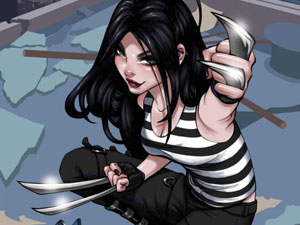 Marjorie Liu, romance novelist-turned-comic book writer, also wrote plenty of fanfiction as a way to refine her writing chops. Talking about working in established universe, including her own work on Wolverine and X-23, she said, “Your job as a writer is to tell a story to flesh out the character and make him real, but a lot of the work has been done for you in terms of the worldbuilding.” When it comes to creator-owned work, however, the burden of worldbuilding is on you. Liu admitted that she did not have an easy transition from Marvel “because I realized I had been relying on this pre-made world, almost as a secondary language, and I didn’t have that anymore.”
Marjorie Liu, romance novelist-turned-comic book writer, also wrote plenty of fanfiction as a way to refine her writing chops. Talking about working in established universe, including her own work on Wolverine and X-23, she said, “Your job as a writer is to tell a story to flesh out the character and make him real, but a lot of the work has been done for you in terms of the worldbuilding.” When it comes to creator-owned work, however, the burden of worldbuilding is on you. Liu admitted that she did not have an easy transition from Marvel “because I realized I had been relying on this pre-made world, almost as a secondary language, and I didn’t have that anymore.”
Leth said that every time she creates a character in a licensed comic, she gets accused of it being her OC (Original Character) self-insert. Katie Cook, who has written the My Little Pony comics for the past few years, actually will get to see a pony version of her in both the comic and the TV show.
With Gotham Academy, Becky Cloonan gets to write a story “steeped in Batman lore,” but she also creates an array of new characters. She referred to it as “creating canon in continuity.”
How Publishers Are Responding to Diversity
Gotham Academy, as well as Annie Wu’s Black Canary, are both new types of books for DC Comics—and so far, the response has been overwhelmingly positive. Cloonan’s first comic was Silver Surfer Annual #1, back in 1988; she remembered thinking, “This is it.” Just as one book changed her life so significantly, she can’t help but think about paying it forward: The thought that Gotham Academy could be a reader’s intro into comics spurs her on to write authentic characters.
Similar to the specific-over-generic discussion in the diversity panel, Wu talked about how “for Black Canary, we try to tap into things that I would personally have loved to see in books, as a reader now, or as a teenager and a kid. I’m trusting that if I follow that instinct, it’ll have a diverse background but also personality, all those little tiny details.” She wants readers to find something in a character (one of which will be “a Grace Jones/David Bowie-type chick”).
This demand for greater diversity in both comic book creators and characters is being acknowledged by publishers. “I think it’s changing because it has to,” Leth said, pointing out that readers and professionals are finding their way to comics much differently than 10-15 years ago. Today, fan art on your Tumblr could get you a job illustrating a comic book, as it did for Marguerite Bennett when she was assembling artists for her new series, Bombshells.
However, Bennett cautions, while people are talking about how inclusive and wonderful it’s going to be in the future, they can’t take it as a given. “While I appreciate the optimism, that’s a trap I don’t want to fall into,” she said. “You have to remember that it takes active participation from every single person to make sure we keep this momentum going. That’s why social media has become so important.”
Diverse Heroes… and Villains?
An interesting audience question that came up during the diversity panel asked how the panelists feel about writing diverse villains that don’t demonize different groups of people as they have in the past.
Pak said that he would love to work on an anthology of diverse villains. “I don’t ever want to have a superhero walk into an alley and there are four black muggers around him,” he said. “That’s not what we mean by diversity.” He added, “I don’t want to write a Fu Manchu Asian villain—I’m not gonna go there—but I will write an Asian villain eventually.”
“We’re working in an era where there’s a full spectrum from human to villain,” Chu said. The heroes of the DMC universe, Miranda-Rodriguez pointed out, wear tracksuits and fedoras, and might look more like villains, with the villains more resembling traditional heroes. “Heroes are only as good as their rogues gallery,” he said.
How Daunting is Diversity?
 A final point that came up from BookCon’s WNDB panel was whether labeling something as diverse alienates potential readers.
A final point that came up from BookCon’s WNDB panel was whether labeling something as diverse alienates potential readers.
“I think that’s the biggest pile of yellow manure,” Bennett said.
“It’s called cross-identifying,” Leth said. “It’s what everyone who grows up who isn’t represented has to do.”
Cloonan said she hopes that girls who are reading Ms. Marvel now will go on to write and draw their own comics, keeping the momentum going. “Ten years ago,” she said, “this panel wouldn’t have happened.”
Edit: I didn’t have the opportunity to attend the #BlackComicsMonth panel, but you can watch the entire panel in the video below. (Thanks to commenter Beauxknows for finding it!)










